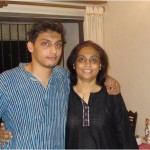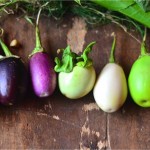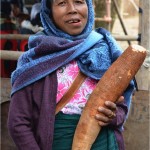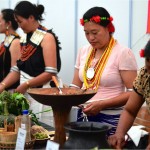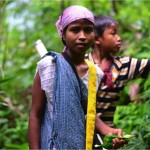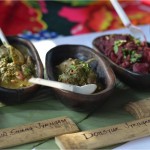by Rahul Antao
27000. This is the number of meals I have eaten in my life far. How do we come to this number?
We all eat approximately 1000 meals a year. I’m 27 years old. So, in 27 years of my life, I have eaten around 27000 meals. 27000 meals equates to 15 months of constant eating. A little more than a year of my entire life. Now that’s a whole lot of meals, and a whole lot of time dedicated to relishing food. There is something to admire in that number. It shows the value that I give to food. Its value that we all give to food but very often let go unnoticed. After all, food is nutritional medicine. It is the fuel for our bodies…the nourishment for our soul…the absolute sustenance of life. However, we all know that it is more than just fuel; there is the aspect of taste that is considered the added value.
Voltaire – the philosopher and writer – sums it up the best when he said, “Nothing would be more tiresome than eating and drinking if God had not made them a pleasure as well as a necessity.”
He had a point there because pleasure is driven by taste…
Take a minute here and imagine how boring our food would be without taste. Now imagine 27000 tasteless meals. Imagine going to the restaurant and ordering a meal that was bland. How many of us would actually pay for that meal? Think of how important is it that we have one out of the five senses dedicated to experiencing and perceiving food.
But of course the people to thank are the cooks who take those ingredients and turn them into tasty meals with their culinary skills. The simple act of cooking with fire is unique only to humans. The diversity of cooking worldwide is a reflection of the myriad nutritional, aesthetic, agricultural, economic, cultural, and religious values that we attribute to it. One such cook who has inspired me is my mother.
As a child I was always enthralled by my mum’s culinary skill… I would spend days with her in the kitchen watching her every move. Noticing the nuances that went into making what I can only consider manna from heaven. As Goan’s our kitchen was always manufacturing the most distinct and flavoursome aromas of vinegar and garlic and red chilli. Festive seasons were even better. We’ve all witnessed this in our homes; festive seasons bring out the best of our culinary heritage. I took up this interest in food, graduated from a culinary school and set out to discover the world of cooks and flavours. I became so fascinated by the subject that somewhere in my learning-curve, I took a deeper interest in understanding food on a more fundamental level…
My hunt for diverse taste when I began asking certain questions like – if my mum makes such yummy tomato sauce then who makes the tomato for my mum’s sauce. I knew there were thousands of flavours out there and I needed to explore more; much like Willywonka going in search of new flavours in Loompaland. I needed to find my own Loopaland. To search for diverse flavours means to search for diverse plants.
If you laid down a map of global biodiversity hotspots and superimposed a map of indigenous peoples you would get a clear match. This excited me so much that I ended up working here in the north east of India amongst indigenous people with the North East Slow Food and Agrobiodiversity society, an organisation that aims to connect people to the pleasure and importance of eating local food.
Most people know what an eggplant is. Some may know it as brinjal or garden egg or guinea squash or aubergine or for the botanist out there, Solanum melongena. If you thought that was a lot of names for one vegetable, you’d love to learn that there is more than just one variety. Now this is where things get interesting, because apart from the fact that they all look different, each of these eggplants has its own unique taste.
I met a lady from one village in Meghalaya who grew six varieties of eggplants in one small plot of land. Kong Redian is one of the most amazing people I know, because it is not just her knowledge on diverse vegetables that’s impressive, it’s her knowledge as a cook on how to convert those plants into tasty dishes. Like my mum she received no formal training in cooking. Her knowledge stemmed from her forefathers.
So what makes people like my mum and Kong Redian so special? What makes a cook so special and important? Over the last 10 years of working with food, I’ve learned that it quite simple. It boils down to the qualities of a cook.
Identity – What you eat is who you are. Local cuisines are shaped by what is grown locally. As Goan’s we are infamous for our seafood. We are coastal state and we have taken what is locally available and mastered it in the kitchen to form a culinary identity. This identity is further shaped through influence. To pull out another example, in Goa we have a dish called ‘vindaloo’. The etymology of the word is derived from two Portuguese words ‘vinha’ and ‘d’alhos’ which means wine and garlic respectively. The Portuguese dish was modified by the substitution of vinegar, usually palm vinegar, for the red wine and the addition of red Kashmiri chillies with additional spices to evolve into ‘vindaloo’ evolving our culinary identity.
Knowledge – is sacred. It is information that becomes knowledge and then tradition when it is transferred from one generation to the next.
Skill – is taking that knowledge and applying it. With practice and experience in the kitchen we develop that skill and harness that knowledge and reproduce it. When my mum makes her ‘vindaloo’, it’s always the same deliciousness; year after year. That’s because she probably spent some 20 odd years of making the same ‘vindaloo’. It means she has mastered the skill.
Creativity – it is an attitude. This attitude is a reflection of different permutations and combinations of our knowledge and skill. For example, we all have different homemade methods of preparing masalas at home. Making masala requires taking different spices and mixing them to form a concoction. We all have family secret recipes that are a family creation. We add to what we know and constantly innovate, be it through tweaks in the recipe or coming up with an entirely new recipe.
Do you know what this means? Through these qualities we preserve and protect our culture, shape our local economies and decide what the farmers should grow. We sustain a diverse eating habit and consume what’s seasonal and local, something that improves our health and the environment.
These four aspects are core to any cook. But today, we are letting ourselves compromise on these qualities and making the new norm of food move from the diverse to the standardized.
The image shows just a handful of rice varieties. We know that we have many more, some even suggest, exceeding 40,000 varieties. That’s an incredible number.
We are moving away from the diversity of foods. We have all become boring, eating the same food around the world. With it we are threatening the role of the cook and changing our farming system. What’s most damaging is the effect on our health and the environment. We are loosing 137 plant, animal, and insect species every day. We know that at least 30,000 of the world’s plants are edible. Sadly, out of the 30,000, only twenty edible plants make up 90 percent of the world’s food. And only three grains – wheat, rice, and maize account for half of the world food intake.
We are observing this as a global pattern. A change to standardization of food and taste that eventually dilutes our culinary identity, takes away that knowledge, in particular amongst youth, and with it we are also loosing the skill and creativity. Given that we face such challenges and given that we still have people like mum, Kong Redian and others who are passionate about food, we decided setup a network of cooks.
A cooks network – Realizing these problems we set out to work with some of these issues. To begin with, we realised the importance of people like Kong Redian and her knowledge. We knew there were more people like and her and setup a platform for knowledge sharing and exchanging; a place to archive information.
Food festivals – They are the best entry point to highlight different cuisines. But more importantly they put the cook in the limelight. They reinsert pride in the local flavours. What started as small event gathering 100 people has now grown into an annual event gathering more than 5000 people. It has also become at international event where we have see people from Thailand, Bhutan and Europe participate.
Biodiversity walks – Students from local schools go on tours into the forest to collect wild edibles and come back to cook it with the communities. Through these walks we documented more than a 100 plants that are now introduced in the midday meals in schools.
Indigenous café – They are restaurants that serve as a medium to enhance local skill by taking the existing traditional knowledge and applying modern ideas such as food presentation. We do not try to make urban elite restaurants but build on capacity to set a standard of hygiene and aesthetics while attempting to revive traditional recipes. We take local restaurants, connect them with local producers and bring back the foods that are disappearing onto the plates while strengthening their livelihood.
Flavor development – There are hundreds of wild edibles out in the forests and fields and we understood the potential for tasty recipes. For example, we took plain old millet flower and created a recipe for a millet pancake which we topped with various local fruits and honey to create a delicious dish.
These ideas are far reaching. They don’t just talk about the cook but also show how cookery is an interlinking art that encompasses a wide array of fields from nutrition, environment, agriculture and local livelihoods.
Do you realize that in our search for well-being and sustainable development we have left out the potential change makers? The people, through whom everyone can benefit, from the rural agricultural communities up to policy matters, are the cooks.
Kong Redian is not just a cook. She keeps the identity, knowledge, skill and creativity of her community alive. She is a nutritionist, a family doctor and a guardian of biodiversity. Whats even more cool is that she does all of this by producing the most delicious meals.
On that note, I would encourage you all to reconnect with your own palate; take the time to enjoy that taste in your food, learn from the person who made it and ask where they got those ingredients form. Because taste is a choice; a choice we all make three times a day…a choice we make 1000 times a year. It’s a choice we make for our own health, a choice we make for a better food system. It’s how we value our food and more importantly how we value the cook and the characters of a cook – the identity, knowledge, skill and creativity of our culinary heritage. It starts with taste and gets routed back to seed…
In this search for a sustainable development and better well-being we have taken everyone into consideration – the environmentalist, the agronomist, the economist, the farmer, the ecologist, the botanist and the conservationist. However, we are still asking ourselves as to what’s missing.
In 1992 Clinton won his election campaign by saying “it’s the economy, stupid.” Given that we are still questioning what these missing links maybe it’s time we respond by saying – “it’s the cooks, stupid.”
(This is a transcript of the speech Rahul Antao gave while representing NESFAS at the TEDxUTM Shillong. He was one of the 11 speakers at this
independently organised TED event in Shillong that took place on the 31st of January 2014, at the U Soso Tham Auditorium)
 Translate
Translate
